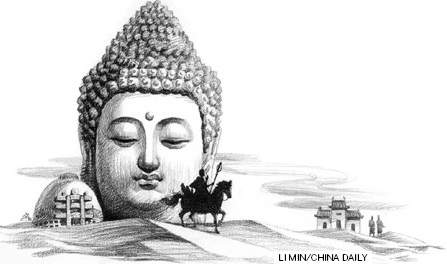Op-Ed Contributors
Indian president's visit a welcome relief
By Swaran Singh (China Daily)
Updated: 2010-05-27 07:49
 |
Large Medium Small |
Sino-Indian ties have gone through some ups and downs in recent times, which has strengthened anti-China-India forces. The recent visit of Jairam Ramesh, India's environment minister, to China was the latest example of the bumpy ride that bilateral ties have witnessed.
While few will doubt that Ramesh represents a select number of Indian politicians with a deep understanding of Sino-Indian ties - last year bilateral trade fell from $52 to $42 billion and mutual investments remained erratic - his remark that New Delhi was being excessively cautious about Chinese investments ended up creating a momentary national crisis in India.
The crisis deepened when the Chinese media was seen as defending Ramesh, after which he was forced to apologize. Though momentary, these over-reactions from both sides reflect the underlying deeper skepticism.
Senior officials and ministers from the two sides, including the Chinese president and premier and the Indian prime minister meet regularly at various global forums nowadays. But Patil's visit is the first by an Indian president in the last 10 years.
Indian presidents' visits to other countries are often aimed at bringing some fresh wisdom to mutual perceptions and policies instead of resulting in the signing of a large number of agreements. The last Indian president to visit China was by K.R. Narayanan in April 2000, two years after India conducted its second nuclear test. And as India's former ambassador to China, Narayanan succeeded in defusing the situation and redefining mutual relationship.
In addition to her meetings with top Chinese leaders, including President Hu, NPC Standing Committee Chairman Wu Bangguo, Premier Wen Jiabao and CPPCC Chairman Jia Qinglin, Patil will also visit the Shanghai Expo. This means the real contribution of the Indian president's visit even this time would be her attempt to reinforce the historical Sino-Indian ties. The visit is also aimed at emphasizing the cultural and civilizational mold of China and India.
To underline this mold, Patil will visit Baima Si (White Horse Temple) in Luoyang to inaugurate an Indian-style garden built by India for $4 million. The garden represents a unique Sino-Indian project, which emphasizes people-to-people contacts as the two countries celebrate 60 years of their diplomatic ties.
To underline the significance of Baima Si, two Indian prime ministers - P.V. Narasimha Rao and Atal Behari Vajpayee - had visited it during their state visits to China in 1993 and 2003. When Wen Jiabao visited India in April 2005, the two sides signed an MoU to build an international garden adjoining Baima Si. China agreed to provide over 2,666 sq m of land and India to provide the architectural design, technical advice and materials for construction and landscaping, and building a 15-foot statue of the Buddha.
The new Indian-style garden celebrates the spirit of Baima Si, which was built by the Eastern Han Emperor Ming Di in 64 AD to honor two Indian monks and resemble the most revered of Buddhist shrines in India - at Sanchi and Sarnath that were built in 3rd and 2nd centuries BC.
The story goes that Ming Di dreamed of a golden figure flying over his palace. When he told his ministers about his dream, they said it must be the Buddha from Tian Zhu, that is, India. He then sent a delegation to India to learn about Buddhism, which returned to China after three years with two Indian monks, Shi Moteng and Zhu Falan (or Kasyapa-Matanga and Dharma-Vanya), and a white horse laden with Buddhist relics and sutras. This prompted Ming Di to order the construction of Baima Si to celebrate the spirit of Zhong Guo and Tian Zhu (modern-day China and India).
It is at Baima Si that Buddhist sutras were translated into Chinese. It is from here that Buddhism spread across China and to Korea, Japan and Vietnam. Buddhism traveled from India to Tibet and Southeast Asia much later.
And since this is what sets China and India apart from most of today's other emerging societies, Patil's visit will be an attempt to highlight this larger backdrop of friendship and historical ties.
The author is professor of diplomacy and disarmament at Jawaharlal Nehru University, New Delhi.

(China Daily 05/27/2010 page9)



